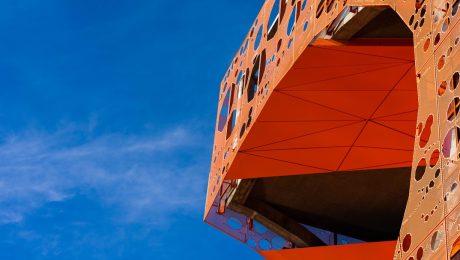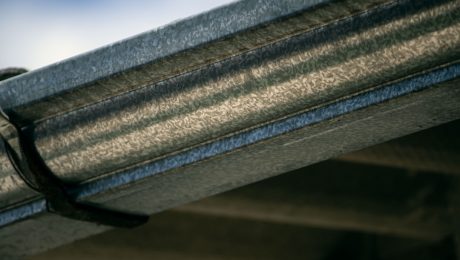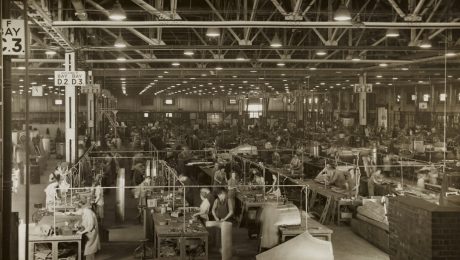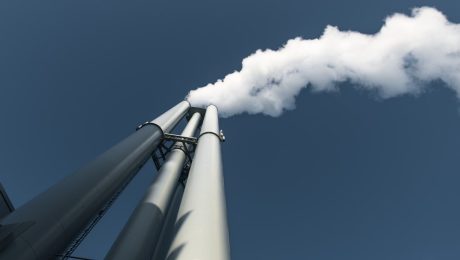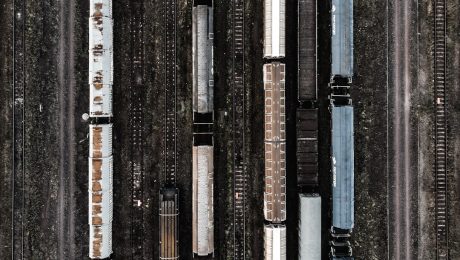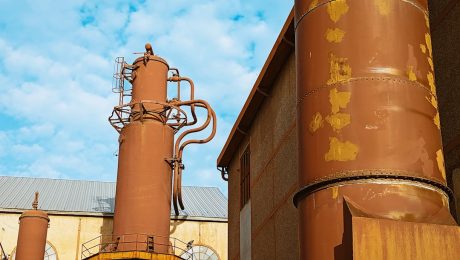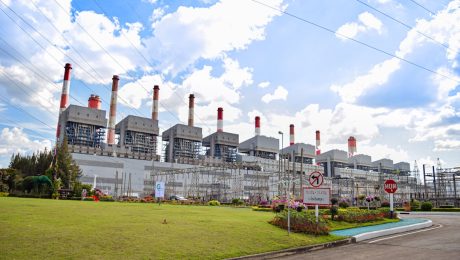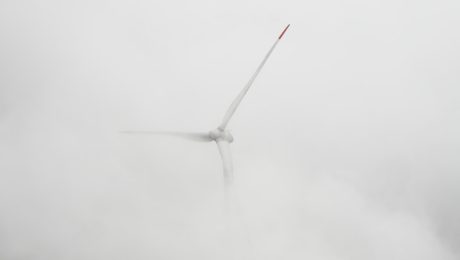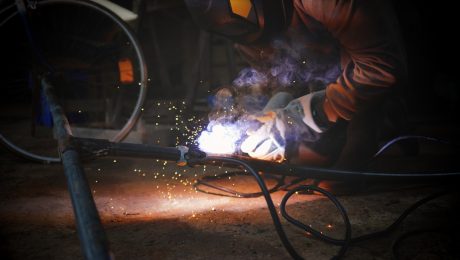body { font-family: sans-serif; line-height: 1.6; }
h1, h2, h3 { color: #333; }
code { background-color: #f0f0f0; padding: 2px 4px; border-radius: 4px; }
High-strength, high-performance (HEA) steel profiles are revolutionizing the construction of heavy load structures. Their superior strength-to-weight ratio allows for lighter, more efficient designs, leading to significant cost and material savings. This comprehensive guide explores the key aspects of utilizing HEA profiles for demanding applications.
Understanding the Advantages of HEA Profiles
HEA profiles offer several key advantages over traditional structural steel sections. Their optimized geometry and advanced steel grades result in significantly increased strength and stiffness. This translates to:
- Reduced weight: HEA profiles allow for the use of less material while maintaining or exceeding the load-bearing capacity of traditional sections.
- Increased span lengths: The enhanced stiffness of HEA profiles enables longer spans, reducing the need for intermediate supports and simplifying construction.
- Improved structural efficiency: The optimized design minimizes material usage while maximizing strength, leading to overall cost savings.
- Enhanced durability: High-strength steel grades used in HEA profiles offer superior resistance to corrosion and fatigue, extending the lifespan of the structure.
- Simplified fabrication: While requiring specialized handling due to their high strength, HEA profiles can simplify construction through fewer components and faster assembly.
Material Selection and Properties of HEA Steel
The performance of HEA profiles is directly linked to the underlying steel grade. Commonly used grades include S355, S460, and even higher-strength steels. These grades exhibit significantly higher yield strengths compared to conventional structural steels. Choosing the appropriate grade depends on the specific load requirements, environmental conditions, and desired lifespan of the structure. Factors to consider include:
- Yield strength: A crucial parameter determining the load-carrying capacity of the profile.
- Tensile strength: Indicates the ultimate strength before fracture.
- Ductility: Essential for ensuring the ability of the material to deform plastically before failure.
- Toughness: Measures the resistance to fracture under impact loading.
- Weldability: Critical for ensuring the integrity of welded connections, a common practice in structural steel fabrication.
Detailed material specifications are crucial and must be sourced from reputable steel manufacturers.
Design Considerations for Heavy Load Structures with HEA Profiles
Designing structures with HEA profiles requires a thorough understanding of their unique properties and potential challenges. Key design considerations include:
- Buckling behavior: The high slenderness of some HEA profiles necessitates careful consideration of buckling, especially under compressive loads. Design methods like the finite element analysis (FEA) are often employed to accurately predict buckling behavior.
- Connection design: High-strength bolts and welds are typically required to transfer the high forces to the HEA profiles. Careful attention must be paid to connection details to ensure sufficient strength and prevent premature failure.
- Fatigue analysis: For structures subjected to cyclic loading, fatigue analysis is essential to ensure the longevity of the structure. This involves assessing the potential for crack initiation and propagation under repeated stress cycles.
- Local buckling: The high strength of HEA profiles can lead to local buckling in certain areas. Careful design and potential local stiffening may be required to mitigate this risk.
- Fabrication tolerances: High precision in fabrication is crucial to ensure the structural integrity of the assembled structure.
Applications of HEA Profiles in Heavy Load Structures
HEA profiles find extensive applications in various heavy load structures, including:
- Bridges: Their high strength-to-weight ratio makes them ideal for bridge girders, reducing the overall weight and improving structural efficiency.
- High-rise buildings: HEA profiles contribute to the structural integrity of tall buildings, enabling the construction of lighter and more slender structures.
- Offshore platforms: The superior corrosion resistance of certain HEA steel grades makes them suitable for harsh marine environments.
- Industrial structures: HEA profiles are used in heavy industrial facilities, such as factories and warehouses, where robust structures are essential.
- Crane structures: The high strength and stiffness of HEA profiles are critical in supporting heavy loads in crane systems.
Future Trends and Innovations in HEA Profile Technology
The field of HEA profiles is constantly evolving, with ongoing research and development focusing on:
- Development of even higher-strength steels: This will further enhance the structural efficiency of HEA profiles.
- Advanced manufacturing techniques: Improved manufacturing processes will lead to more precise and efficient production of HEA profiles.
- Integration with smart materials and sensors: This will enable real-time monitoring of structural health and performance.
- Sustainable steel production: The focus is shifting towards more environmentally friendly methods of steel production to reduce the carbon footprint.
- Advanced modeling and simulation techniques: Sophisticated software tools are being developed to further improve the accuracy and efficiency of structural design with HEA profiles.
In conclusion, HEA profiles represent a significant advancement in structural engineering, enabling the construction of lighter, stronger, and more efficient heavy load structures. By carefully considering the design aspects and material selection, engineers can harness the full potential of HEA profiles to create innovative and sustainable solutions for a wide range of applications.
Tags: HEA profiles, High-strength steel, Heavy load structures, Structural engineering, Steel design
The world of industrial piping is constantly evolving, driven by the need for stronger, lighter, and more durable materials. One exciting advancement is the development of carbon fiber-coated steel pipes. This innovative technology combines the inherent strength and cost-effectiveness of steel with the exceptional properties of carbon fiber, resulting in a superior product with a wide range of applications.
Enhanced Strength and Stiffness: A Superior Material Blend
Steel pipes, while robust, can be susceptible to bending and buckling under extreme pressure or heavy loads. Carbon fiber, renowned for its incredibly high tensile strength and stiffness-to-weight ratio, significantly addresses this limitation. By applying a carefully engineered layer of carbon fiber to the outer surface of the steel pipe, the composite structure gains substantial improvements in both strength and stiffness. This enhancement allows for the use of thinner-walled steel pipes without compromising structural integrity, leading to weight reduction and cost savings. The carbon fiber acts as a reinforcement, distributing stress more effectively and preventing premature failure under demanding conditions.
Unmatched Corrosion Resistance: Extending Pipe Lifespan
Corrosion is a major concern in many industrial applications, especially in harsh environments like chemical plants, oil and gas pipelines, and marine settings. Steel pipes are vulnerable to rust and degradation, leading to costly repairs and replacements. The carbon fiber coating acts as a protective barrier, significantly improving corrosion resistance. This is particularly crucial in environments with high humidity, salinity, or exposure to aggressive chemicals. The composite structure’s resistance to electrochemical processes extends the lifespan of the pipes, reducing maintenance costs and ensuring operational reliability for extended periods.
Lightweight Design: Reducing Transportation and Installation Costs
The weight reduction achieved by using thinner-walled steel pipes reinforced with carbon fiber translates into significant cost savings during transportation and installation. Lighter pipes require less manpower and specialized equipment for handling and placement, reducing labor costs and project timelines. This is particularly beneficial in large-scale projects where the transportation of materials over long distances is a major factor. The reduced weight also minimizes stress on supporting structures, potentially simplifying infrastructure requirements.
Applications Across Industries: From Oil & Gas to Aerospace
The versatility of carbon fiber-coated steel pipes makes them suitable for a wide array of applications across diverse industries. In the oil and gas sector, these pipes are used for transporting high-pressure fluids and gases, offering superior durability and safety. The aerospace industry utilizes them in aircraft structures and engine components, benefiting from their high strength-to-weight ratio. Chemical processing plants leverage their corrosion resistance for handling aggressive chemicals. Even the construction industry is exploring their use in structural supports, where their strength and lightweight properties are advantageous.
Manufacturing Process and Considerations: A Technological Marvel
The manufacturing process of carbon fiber-coated steel pipes involves several critical steps. First, the steel pipe is prepared by cleaning and surface treatment to ensure proper adhesion of the carbon fiber. Then, the carbon fiber layers are applied using techniques like filament winding or prepreg layup. These processes require precision and control to achieve the desired thickness and uniformity of the coating. Finally, the composite structure is cured using heat and pressure to bond the carbon fiber to the steel pipe, creating a strong and durable composite material. Careful consideration must be given to the selection of resin systems and curing parameters to optimize the performance and longevity of the final product. Quality control throughout the manufacturing process is essential to ensure consistent product quality and performance.
In conclusion, carbon fiber-coated steel pipes represent a significant advancement in piping technology. By combining the best properties of steel and carbon fiber, these pipes offer enhanced strength, corrosion resistance, and lightweight design, making them ideal for a wide range of applications. As the technology continues to mature and costs potentially decrease, we can expect to see even wider adoption of this innovative material in various industries.
SEO Tags:
- Carbon Fiber Coated Steel Pipes
- Composite Pipes
- High Strength Pipes
- Corrosion Resistant Pipes
- Steel Pipe Reinforcement
Achieving a production capacity of 000 tons per year represents a significant milestone for any manufacturing enterprise. It signifies a level of operational efficiency, technological prowess, and strategic planning that sets the company apart. This post delves into the multifaceted aspects of such a substantial production capacity, examining its implications and the challenges involved in its attainment and maintenance.
1. The Significance of 000 Ton/Year Production Capacity
A production capacity of 000 tons per year indicates a large-scale operation capable of supplying a considerable market share. This scale often necessitates significant investments in infrastructure, technology, and human capital. The implications are far-reaching, impacting not only the company’s market position but also its supply chain management, logistics, and overall profitability. Such a high output often signifies a dominant position within the industry, allowing for economies of scale and potentially influencing market pricing. However, it also carries significant risks, including higher fixed costs and greater vulnerability to market fluctuations.
2. Technological Advancements for Achieving High Production Capacity
Reaching a production capacity of 000 tons per year demands cutting-edge technology. Automation plays a crucial role, from robotic assembly lines and automated guided vehicles (AGVs) to sophisticated control systems that monitor and optimize every aspect of the production process. Advanced materials science may be needed to improve the durability and efficiency of machinery, leading to less downtime and increased output. Data analytics and machine learning are essential for predictive maintenance, identifying potential bottlenecks before they occur, and optimizing resource allocation. Implementing sophisticated Enterprise Resource Planning (ERP) systems is vital for seamless integration across all departments, from procurement to sales.
3. Strategic Planning and Supply Chain Management for 000 Ton/Year Output
Efficient supply chain management is paramount for a production capacity of this magnitude. Reliable sourcing of raw materials, efficient logistics for transportation, and effective inventory management are all crucial components. Forecasting demand accurately is vital to avoid overproduction or shortages. Building robust relationships with suppliers is essential to ensure a consistent supply of high-quality materials. Strategic partnerships can help mitigate risks and improve efficiency across the entire supply chain. Furthermore, meticulous planning for storage and distribution of the finished product is crucial to avoid bottlenecks and ensure timely delivery to customers.
4. Challenges and Risks Associated with High Production Capacity
While a high production capacity offers significant advantages, it also presents considerable challenges. The initial investment required can be substantial, demanding substantial financial resources. Maintaining such a large-scale operation requires a skilled and experienced workforce, which can be difficult to recruit and retain. Market fluctuations can significantly impact profitability, as higher fixed costs mean that a drop in demand can lead to substantial losses. Quality control becomes even more critical at this scale, requiring rigorous testing and monitoring throughout the production process. Environmental regulations and sustainability concerns also become more prominent, demanding environmentally friendly practices and efficient waste management.
5. Sustainability and Environmental Considerations in High-Volume Production
Operating at a 000 ton/year production capacity necessitates a strong commitment to sustainability. Environmental regulations are increasingly stringent, and consumers are increasingly demanding environmentally responsible products. Implementing green technologies, such as renewable energy sources and waste reduction strategies, is crucial for reducing the environmental footprint of the operation. Sustainable sourcing of raw materials, minimizing water and energy consumption, and implementing efficient waste management systems are all integral aspects of responsible high-volume production. Transparency in environmental practices and reporting can enhance the company’s reputation and build trust with stakeholders.
Achieving and maintaining a 000 ton/year production capacity is a complex undertaking that demands meticulous planning, significant investment, and a commitment to innovation. While the challenges are significant, the rewards – increased market share, enhanced profitability, and a strengthened competitive position – make it a worthwhile endeavor for ambitious manufacturing companies.
SEO Tags:
- Production Capacity
- Manufacturing Scale
- Industrial Output
- High-Volume Production
- Supply Chain Management
Choosing the right pipe is crucial for the success of any energy project. From oil and gas pipelines to geothermal energy systems and renewable energy infrastructure, the selection process demands careful consideration of numerous factors. A poorly chosen pipe can lead to leaks, failures, increased maintenance costs, and even environmental disasters. This comprehensive guide will walk you through the key aspects of selecting the optimal piping system for your specific needs.
1. Material Matters: Selecting the Right Pipe Material for Your Energy Project
The material of your pipe is the foundational element of its performance and longevity. The choice depends heavily on the fluid being transported, the operating pressure and temperature, the environmental conditions, and the project’s budget. Common materials include:
- Steel: A widely used material due to its high strength, durability, and relatively low cost. Different grades of steel (carbon steel, stainless steel, alloy steel) offer varying corrosion resistance and temperature tolerances. Carbon steel is suitable for many applications but requires corrosion protection in harsh environments. Stainless steel offers superior corrosion resistance but comes at a higher cost.
- Plastic (PVC, HDPE, PE): Lightweight and corrosion-resistant, plastic pipes are ideal for lower-pressure applications, such as water distribution in renewable energy projects or chemical transport in certain industrial settings. However, they have limitations in terms of temperature and pressure resistance compared to steel.
- Copper: Excellent corrosion resistance and thermal conductivity make copper pipes suitable for applications requiring high purity or heat transfer, although they are more expensive than steel.
- Fiberglass Reinforced Polymer (FRP): Lightweight, corrosion-resistant, and strong, FRP pipes are increasingly popular in harsh environments or where corrosion is a major concern. They offer a good balance of strength and cost-effectiveness.
Careful consideration of the material’s properties and the specific requirements of your project is essential for long-term success.
2. Pressure Ratings and Flow Capacity: Matching Pipe Specifications to Project Demands
The operating pressure and flow rate of the fluid are critical factors in pipe selection. Pipes are designed with specific pressure ratings (expressed in PSI or bar) that indicate the maximum pressure they can safely withstand. Exceeding this rating can lead to catastrophic failure. Similarly, the pipe’s diameter influences the flow capacity. A smaller diameter pipe will restrict flow, leading to increased pressure drop and potentially reduced efficiency. Accurate calculations of pressure drop and flow rate are crucial to selecting the appropriate pipe size and schedule (wall thickness).
Specialized software and engineering expertise are often required to perform these calculations, ensuring the chosen pipe can handle the anticipated flow conditions without exceeding its pressure limits or causing unacceptable pressure losses.
3. Environmental Considerations: Protecting the Planet and Your Project
Environmental impact is a paramount consideration in energy projects. The chosen pipe material should be assessed for its potential environmental impact throughout its lifecycle, from manufacturing to disposal. Factors to consider include:
- Corrosion resistance: To prevent leaks and spills that could contaminate soil or water.
- Material recyclability: To minimize waste and promote sustainability.
- Manufacturing processes: To minimize carbon footprint and pollution.
- Potential for leaks and spills: To protect ecosystems and human health.
Sustainable pipe materials and installation practices are becoming increasingly important, reflecting a growing focus on environmental responsibility within the energy sector.
4. Cost Analysis: Balancing Performance with Budgetary Constraints
While performance and longevity are essential, the cost of the pipe and its installation must also be considered. Different materials have different price points, and the cost of installation can vary depending on factors like pipe diameter, accessibility, and terrain. A comprehensive cost analysis should consider the initial purchase price, installation costs, maintenance costs, and the potential costs associated with failure or leaks. Life-cycle costing, which considers the total cost of ownership over the pipe’s lifespan, is a valuable tool for making informed decisions.
Finding the optimal balance between performance, durability, and cost is crucial for ensuring the economic viability of the energy project.
5. Regulatory Compliance and Industry Standards: Adhering to Best Practices
Energy projects are subject to numerous regulations and industry standards that dictate the acceptable materials, installation methods, and testing procedures for pipelines. Compliance with these regulations is essential to ensure the safety and legality of the project. These regulations vary depending on the location and type of energy project, and it is crucial to thoroughly research and understand the relevant standards before making any pipe selection decisions. Failure to comply can lead to significant delays, penalties, and legal ramifications.
Working with experienced engineers and contractors who are familiar with the relevant regulations and standards is vital to ensure compliance throughout the project lifecycle.
Selecting the right pipe for your energy project is a complex decision that requires careful consideration of many factors. By understanding the material properties, pressure ratings, environmental impact, cost implications, and regulatory requirements, you can make informed choices that ensure the safety, efficiency, and sustainability of your project. Remember to consult with experienced engineers and contractors to leverage their expertise and ensure the successful completion of your energy project.
Tags: Energy Pipelines, Pipe Selection, Pipe Materials, Pressure Ratings, Energy Project Planning
The steel industry, a cornerstone of global manufacturing, faces persistent challenges in supply chain management. From fluctuating prices and material shortages to inefficient sourcing processes and a lack of transparency, the need for streamlined solutions is undeniable. Enter steel B2B matching platforms – innovative digital marketplaces revolutionizing how steel buyers and sellers connect and transact.
Streamlining Steel Sourcing: A Digital Revolution
Traditional steel sourcing often involves a complex web of intermediaries, lengthy negotiations, and a lack of real-time market visibility. Steel B2B matching platforms cut through this complexity by creating a centralized, digital marketplace. Buyers can easily browse a wide range of steel products from verified suppliers, compare prices and specifications, and initiate transactions efficiently. This streamlined approach reduces lead times, minimizes administrative overhead, and significantly improves procurement efficiency. The platform’s search functionalities allow buyers to specify their exact requirements – grade, quantity, delivery location – ensuring they find the perfect match quickly. This precision reduces the risk of ordering incorrect materials and minimizes delays.
Enhanced Transparency and Price Discovery
One of the biggest advantages of steel B2B matching platforms is the enhanced transparency they provide. Buyers gain access to real-time market data, including current prices, inventory levels, and supplier capabilities. This transparency empowers informed decision-making, allowing buyers to negotiate better prices and secure the most favorable terms. The platform’s competitive environment fosters price discovery, driving down costs and creating a more equitable marketplace for both buyers and sellers. This increased visibility also helps buyers anticipate market fluctuations and adjust their purchasing strategies accordingly, mitigating risks associated with price volatility.
Building Stronger Supplier-Buyer Relationships
Beyond facilitating transactions, steel B2B matching platforms foster stronger relationships between buyers and suppliers. The platform’s secure communication tools enable direct interaction, allowing buyers and sellers to clarify requirements, discuss specific needs, and build trust. This direct engagement fosters collaboration and long-term partnerships, leading to more reliable supply chains and improved overall efficiency. Regular interaction on the platform allows for the development of strong business relationships based on mutual understanding and shared goals. This can lead to preferential pricing, faster delivery times, and more tailored solutions in the future.
Expanding Market Reach and Access
Geographic limitations are a significant hurdle for many steel buyers and sellers. Steel B2B matching platforms overcome this challenge by connecting businesses across borders. Buyers can access a global network of suppliers, expanding their sourcing options and securing the best possible deals, regardless of location. Similarly, suppliers can reach a wider customer base, increasing their sales potential and market penetration. This global reach fosters competition, drives innovation, and ultimately benefits the entire steel industry by promoting a more efficient and interconnected marketplace. The platform’s multilingual capabilities further enhance accessibility for international businesses.
Data-Driven Insights for Strategic Decision-Making
Many advanced steel B2B matching platforms go beyond basic transactional capabilities. They leverage data analytics to provide valuable insights into market trends, pricing patterns, and supply chain performance. This data-driven approach allows businesses to make more informed decisions regarding purchasing strategies, inventory management, and overall supply chain optimization. Real-time dashboards provide clear visualizations of key metrics, enabling proactive responses to market changes and potential disruptions. This analytical capacity empowers businesses to optimize their operations, reduce costs, and gain a competitive edge in the dynamic steel market.
In conclusion, steel B2B matching platforms are transforming the steel industry by streamlining sourcing, enhancing transparency, building stronger relationships, expanding market reach, and providing data-driven insights. These platforms are no longer a niche technology; they are becoming essential tools for businesses seeking to thrive in a competitive and ever-evolving landscape. The future of steel procurement is digital, and the benefits are clear for both buyers and sellers alike.
SEO Tags:
- Steel B2B
- Steel Matching Platform
- Steel Supply Chain Management
- Online Steel Marketplace
- Steel Procurement Software
High-pressure systems are essential in numerous industries, from chemical processing and power generation to oil and gas extraction. However, the inherent risks associated with high pressure demand rigorous safety protocols and unwavering vigilance. This comprehensive guide delves into the critical safety considerations for effectively managing these potentially hazardous environments.
1. Design Considerations for High-Pressure Safety
The foundation of a safe high-pressure system lies in its design. Careful consideration of materials, pressure ratings, and safety features is paramount. Materials must possess sufficient strength and corrosion resistance to withstand the operating pressure and the nature of the contained fluid. Pressure vessels should be designed and manufactured according to relevant industry standards (e.g., ASME Section VIII), incorporating features like pressure relief valves, rupture disks, and pressure gauges. Redundancy in critical components is often employed to mitigate single-point failures. Finite element analysis (FEA) is frequently used to simulate pressure conditions and identify potential weak points in the design. Proper design also includes incorporating easy access for inspection and maintenance, minimizing blind spots and simplifying the process of identifying potential problems.
2. Operational Procedures and Risk Assessment
Safe operation of high-pressure systems necessitates well-defined procedures and a thorough risk assessment. Before starting any operation, a comprehensive pre-start checklist should be followed, verifying the integrity of all components and the accuracy of pressure readings. Regular monitoring of pressure, temperature, and other relevant parameters is critical. Operators should be adequately trained on the system’s operation, emergency procedures, and the use of safety equipment. A robust risk assessment should identify potential hazards, evaluate their likelihood and severity, and outline mitigation strategies. This assessment should consider human error, equipment failure, and environmental factors. Regular safety audits and drills are crucial to maintain preparedness and identify areas for improvement.
3. Maintenance and Inspection: The Cornerstone of Safety
Preventative maintenance is a cornerstone of high-pressure system safety. Regular inspections, including visual checks, non-destructive testing (NDT) techniques like ultrasonic testing and radiography, and pressure testing, are essential to detect and address potential problems before they escalate. A comprehensive maintenance schedule should be developed and adhered to, outlining tasks such as cleaning, lubrication, and component replacement. Detailed records of all maintenance activities should be kept for traceability and compliance purposes. Proper documentation ensures that any issues are promptly addressed and that the system is maintained in a safe and reliable condition. This meticulous record-keeping also aids in identifying trends and potential areas for improvement in the maintenance process itself.
4. Emergency Procedures and Response Planning
Despite meticulous design, operation, and maintenance, accidents can still occur. A comprehensive emergency response plan is therefore essential. This plan should outline procedures for handling various scenarios, including pressure surges, leaks, and equipment failures. Emergency shut-down procedures should be clearly defined and regularly practiced. Emergency equipment, such as pressure relief valves, isolation valves, and personal protective equipment (PPE), should be readily accessible and in good working order. Training on emergency procedures should be mandatory for all personnel involved in the operation and maintenance of the system. Regular drills and simulations will help ensure that personnel respond effectively in a real emergency situation.
5. Regulatory Compliance and Safety Standards
Operating high-pressure systems requires strict adherence to relevant safety regulations and industry standards. These regulations vary depending on the location and the specific industry, but they typically cover aspects such as design, installation, operation, maintenance, and emergency procedures. Staying updated on the latest regulations is crucial to ensure compliance and maintain a safe working environment. Regular audits and inspections by regulatory bodies should be anticipated and proactively addressed. Maintaining detailed documentation of compliance efforts is essential for demonstrating adherence to regulations and mitigating potential legal liabilities. Understanding and adhering to these standards is not merely a legal obligation; it is a critical factor in preventing accidents and ensuring the safety of personnel and the environment.
In conclusion, ensuring safety in high-pressure systems requires a multi-faceted approach encompassing careful design, rigorous operational procedures, diligent maintenance, comprehensive emergency planning, and unwavering adherence to safety regulations. By prioritizing safety at every stage, industries can mitigate risks and create a safer working environment for all involved.
SEO Tags:
- High-pressure systems safety
- Pressure vessel safety
- Industrial safety regulations
- High-pressure system maintenance
- Process safety management
In today’s competitive market, demonstrating the quality and safety of your products or services is paramount. This is where test reports and certifications play a crucial role. They act as a powerful testament to your commitment to excellence, providing assurance to customers, partners, and regulatory bodies. This comprehensive guide will delve into the world of test reports and certifications, exploring their significance, types, and applications.
Understanding the Importance of Test Reports
Test reports are detailed documents that provide a comprehensive summary of the testing process. They outline the objectives of the testing, the methodologies employed, the results obtained, and any conclusions drawn. These reports are crucial for several reasons:
- Demonstrating Product Quality: Test reports provide irrefutable evidence of a product’s performance, reliability, and safety. This is vital for building customer trust and confidence.
- Identifying Defects and Areas for Improvement: By meticulously documenting test results, reports help pinpoint weaknesses and areas needing further development or refinement. This facilitates continuous improvement and enhances product quality.
- Facilitating Communication: Test reports serve as a clear and concise communication tool between testing teams, developers, and stakeholders. This ensures everyone is on the same page regarding product performance and potential issues.
- Meeting Regulatory Requirements: Many industries have strict regulations requiring comprehensive testing and documentation. Test reports are essential for demonstrating compliance and avoiding legal repercussions.
- Supporting Business Decisions: The data presented in test reports informs critical business decisions regarding product launch, marketing strategies, and resource allocation.
Types of Test Reports and Their Applications
The specific format and content of a test report vary depending on the type of testing conducted. Some common types include:
- Software Testing Reports: Detail the results of software testing, including functional testing, performance testing, security testing, and usability testing. These reports usually include bug reports, test cases, and overall system performance metrics.
- Hardware Testing Reports: Document the results of tests performed on physical hardware, such as stress tests, durability tests, and environmental tests. These reports often include detailed specifications, test parameters, and failure analysis.
- Material Testing Reports: These reports summarize tests conducted on materials to determine their properties, such as strength, durability, and chemical composition. They are crucial in manufacturing and construction industries.
- Compliance Testing Reports: These reports demonstrate that a product or service meets specific regulatory standards and requirements. They are often required for product certification.
The Significance of Certifications
Certifications go a step further than test reports. They are formal recognitions issued by accredited bodies, confirming that a product, service, or system meets pre-defined standards and specifications. Certifications provide several key benefits:
- Enhanced Credibility and Trust: Certifications from reputable organizations significantly boost a company’s credibility and build trust among customers and partners.
- Competitive Advantage: Holding relevant certifications can give a company a competitive edge in the marketplace, differentiating them from competitors who lack such validation.
- Market Access: Certain certifications are mandatory for accessing specific markets or supplying goods to particular clients. They act as a gatekeeper for compliance.
- Reduced Risk: Certifications demonstrate a commitment to quality and safety, reducing the risk of product failures, recalls, and legal issues.
- Improved Efficiency: Implementing certified quality management systems can streamline processes and improve overall efficiency.
Common Certification Standards and Their Relevance
Numerous certification standards exist, each catering to specific industries and requirements. Some widely recognized standards include:
- ISO 9001: Focuses on quality management systems, ensuring consistent product quality and customer satisfaction.
- ISO 14001: Addresses environmental management systems, demonstrating commitment to environmental responsibility.
- ISO 27001: Deals with information security management systems, ensuring the protection of sensitive data.
- CE Marking (European Conformity): Indicates that a product meets EU health, safety, and environmental protection requirements.
- UL (Underwriters Laboratories): Provides safety certifications for a wide range of products, ensuring they meet safety standards.
These are just a few examples; many industry-specific certifications exist.
Integrating Test Reports and Certifications into Your Business Strategy
Integrating robust testing procedures and pursuing relevant certifications is not merely a compliance exercise; it’s a strategic investment that yields significant long-term benefits. Here’s how to effectively incorporate them into your business strategy:
- Identify Relevant Standards: Determine which standards and certifications are applicable to your industry and products.
- Develop a Comprehensive Testing Plan: Create a detailed testing plan that covers all aspects of your product or service.
- Choose Accredited Testing Labs: Select reputable and accredited testing laboratories to ensure the objectivity and validity of your test results.
- Maintain Accurate Records: Keep meticulous records of all testing procedures, results, and certifications.
- Regularly Review and Update: Continuously review your testing procedures and certifications to ensure they remain relevant and effective.
By understanding the power of test reports and certifications, and by strategically integrating them into your business operations, you can build a strong reputation for quality, enhance customer trust, and achieve sustainable growth.
Tags: test reports, certifications, quality assurance, ISO certifications, testing standards
body { font-family: sans-serif; line-height: 1.6; }
h1, h2, h3 { color: #333; }
h1 { font-size: 2.5em; }
h2 { font-size: 2em; }
h3 { font-size: 1.5em; }
The phrase “000 ton/year production capacity” represents a significant milestone for any manufacturing or industrial operation. While the “000” placeholder requires specific numerical input for practical application, the underlying principles and implications remain consistent regardless of the precise tonnage. This post delves into the crucial aspects of understanding and optimizing a production capacity of this scale, exploring the challenges, opportunities, and strategic considerations involved.
Defining 000 Ton/Year Production Capacity: What Does It Mean?
A production capacity of 000 tons per year signifies the maximum amount of a particular product a facility can produce within a 365-day period, assuming optimal operating conditions and resource allocation. This figure is crucial for several reasons. It dictates the potential revenue generation, influences investment decisions, and guides strategic planning for growth and expansion. Understanding this capacity requires examining the entire production process, from raw material sourcing and processing to manufacturing, packaging, and distribution. Bottlenecks in any stage can significantly limit the overall production capacity, regardless of the potential of other stages. For example, a facility might have a highly efficient manufacturing line, but if raw material supply is inconsistent, the overall capacity will be constrained.
Scaling Challenges: From Small-Scale to 000 Tons/Year
Scaling a production operation from a smaller capacity to a significantly larger one, such as 000 tons/year, presents a multitude of challenges. These challenges can be categorized into several key areas:
- Infrastructure: Existing facilities may not be suitable for the increased output. This necessitates investment in new buildings, equipment, and infrastructure, potentially requiring significant capital expenditure.
- Supply Chain: Sourcing sufficient raw materials to support a 000 ton/year operation requires establishing robust and reliable supply chains. This may involve negotiating long-term contracts with suppliers, diversifying sources, and managing logistical complexities.
- Human Resources: A larger-scale operation demands a larger workforce, requiring recruitment, training, and effective management of a potentially diverse team. Efficient workforce planning is crucial to avoid bottlenecks and maintain productivity.
- Technology: Implementing advanced technologies, such as automation and process optimization software, can be crucial for maintaining efficiency and quality at a larger scale. This involves significant upfront investment and ongoing maintenance.
Market Analysis and Demand Forecasting: Is 000 Tons/Year Realistic?
Before embarking on scaling to a 000 ton/year capacity, a thorough market analysis is essential. This involves understanding the current market demand for the product, projecting future demand growth, and assessing the competitive landscape. Accurate demand forecasting is crucial to avoid overproduction and wasted resources. Factors such as seasonal variations, economic conditions, and emerging market trends all play a significant role in determining the realistic viability of such a large production capacity. A comprehensive market research plan, incorporating both quantitative and qualitative data, is essential.
Profitability Analysis: The Economics of 000 Ton/Year Production
Achieving profitability at a 000 ton/year production capacity requires careful financial planning and cost management. The analysis should consider several key factors:
- Fixed Costs: These include investments in infrastructure, equipment, and land. Amortizing these costs over the production volume is crucial for profitability.
- Variable Costs: These include raw materials, labor, energy, and transportation. Efficient cost management in these areas is vital for maintaining profitability, especially at a large scale.
- Pricing Strategy: Determining an optimal pricing strategy that balances market competitiveness and profitability is crucial. This requires careful consideration of customer segmentation, competitor pricing, and cost structure.
- Economies of Scale: A larger production capacity often leads to economies of scale, reducing the per-unit cost of production. However, realizing these economies requires efficient management and optimized processes.
Sustainability and Environmental Impact: Responsible Production at Scale
Operating a 000 ton/year production facility necessitates a strong commitment to sustainability and environmental responsibility. This involves minimizing waste, reducing energy consumption, and implementing environmentally friendly practices throughout the entire production process. Compliance with relevant environmental regulations is crucial, and proactive measures to reduce the environmental footprint can enhance the company’s image and attract environmentally conscious consumers. Investing in renewable energy sources, implementing waste reduction strategies, and optimizing resource utilization are vital for achieving sustainable production at this scale.
In conclusion, achieving and sustaining a 000 ton/year production capacity requires meticulous planning, significant investment, and a comprehensive understanding of market dynamics, operational efficiency, and environmental responsibility. By addressing the challenges and capitalizing on the opportunities presented, businesses can unlock the immense potential of this substantial production scale.
SEO Tags:
Production Capacity, Manufacturing Scale, Industrial Production, Market Demand Forecasting, Profitability Analysis
body { font-family: sans-serif; line-height: 1.6; }
h1, h2, h3 { color: #333; }
img { max-width: 100%; height: auto; }
Wind turbines, the silent giants of renewable energy, rely on intricate engineering to harness the power of the wind. While the blades themselves are crucial for energy generation, their robust support system is equally vital. This system, responsible for withstanding immense forces and ensuring the smooth operation of the turbine, is a complex interplay of design, materials, and maintenance. This post delves into the fascinating world of wind turbine blade support systems, exploring their intricacies and future advancements.
The Critical Role of Blade Pitch Systems
The blade pitch system is arguably the most crucial component of the blade support system. It allows for the adjustment of the angle of the blades relative to the incoming wind. This adjustment is vital for optimizing energy capture and protecting the turbine during high-wind conditions. By changing the pitch angle, operators can maximize energy output at optimal wind speeds and prevent damage during storms. The system typically uses hydraulic or electric actuators to precisely control the pitch of each blade individually. The actuators are connected to the blade via a complex system of bearings, shafts, and linkages, all designed to withstand significant stress and fatigue.
Understanding the Importance of Blade Root Connections
The connection between the blade and the hub is another critical aspect of the support system. This root connection must withstand enormous loads, both cyclic (due to the rotating motion) and static (due to wind pressure). The design of this connection varies depending on the size and type of turbine. Larger turbines often employ sophisticated bolted connections with multiple redundant fasteners to ensure reliability. High-strength materials, such as steel alloys and composites, are used to minimize weight while maintaining structural integrity. Regular inspection and maintenance of these connections are essential to prevent catastrophic failures.
The Materials Science Behind Durable Support Structures
The materials used in wind turbine blade support systems are carefully selected to withstand extreme conditions. Steel remains a prevalent choice due to its strength and relatively low cost. However, the trend is shifting towards lighter and stronger composite materials, such as carbon fiber reinforced polymers (CFRP) and glass fiber reinforced polymers (GFRP). These composites offer significant advantages in terms of weight reduction, which translates to lower manufacturing costs and increased efficiency. Moreover, composites exhibit excellent fatigue resistance, crucial for withstanding the continuous cyclic loading experienced by the blades. Ongoing research focuses on developing even more advanced materials with enhanced durability and resistance to environmental degradation.
Maintenance and Inspection Strategies for Optimal Performance
Regular maintenance and inspection of the blade support system are paramount for ensuring the safety and longevity of the wind turbine. This involves visual inspections, ultrasonic testing, and other non-destructive testing methods to detect any signs of damage or wear. Regular lubrication of bearings and other moving parts is also essential to prevent premature failure. Advanced monitoring systems, employing sensors to track vibration, temperature, and other key parameters, are increasingly being incorporated to provide early warning of potential problems. Predictive maintenance strategies, based on data analysis from these monitoring systems, are becoming increasingly common, allowing for proactive repairs and minimizing downtime.
Future Innovations in Wind Turbine Blade Support Technology
The field of wind turbine blade support systems is constantly evolving. Research is focused on developing more efficient, reliable, and cost-effective solutions. This includes exploring new materials with enhanced properties, developing advanced control systems for improved energy capture and protection, and implementing innovative designs to reduce weight and increase lifespan. The integration of artificial intelligence (AI) and machine learning (ML) into monitoring and maintenance strategies is also a promising area. AI-powered systems can analyze vast amounts of data from sensors to predict potential failures with greater accuracy, leading to more efficient maintenance scheduling and reduced downtime. Furthermore, advancements in 3D printing technology offer the potential for creating customized and highly optimized support structures with complex geometries.
In conclusion, the seemingly simple act of supporting a wind turbine blade is a complex engineering challenge. The ongoing development and refinement of blade support systems are crucial for the continued growth and success of the wind energy industry. As technology advances, we can expect even more robust, efficient, and sustainable solutions to emerge, ensuring the reliable and cost-effective generation of clean energy for years to come.
SEO Tags:
wind turbine blades, blade pitch system, wind turbine maintenance, composite materials wind turbines, wind turbine support structures
Steel. A word synonymous with strength, durability, and resilience. But beyond its inherent properties lies a world of innovative applications, solving complex engineering challenges across diverse industries. This blog post delves into compelling case studies, showcasing the versatility and ingenuity of steel solutions in action.
1. Skyscrapers: Reaching New Heights with Steel’s Strength
The iconic skyline of modern cities is a testament to steel’s ability to defy gravity. Skyscrapers, those towering symbols of ambition and architectural prowess, rely heavily on steel’s high tensile strength and flexibility. Consider the Burj Khalifa, the world’s tallest building. Its intricate steel frame, a marvel of engineering, supports unimaginable weight and withstands extreme environmental conditions. The design incorporates high-strength steel, optimized for weight reduction without compromising structural integrity. This not only minimizes the building’s environmental impact but also reduces construction costs. Other notable examples include the Shanghai Tower and the One World Trade Center, each showcasing unique steel structures designed to meet specific challenges related to wind load, seismic activity, and fire safety. The precision engineering involved in these projects underlines steel’s critical role in pushing the boundaries of architectural design.
2. Bridges: Spanning Gaps with Steel’s Resilience
Bridges, crucial arteries of transportation networks, often face immense stresses from traffic, weather, and seismic activity. Steel’s inherent ability to withstand these forces makes it an ideal material for bridge construction. The Golden Gate Bridge, a global icon, is a prime example. Its suspension design, utilizing high-tensile steel cables and a robust steel deck, has withstood decades of exposure to harsh marine environments and intense winds. Similarly, the Akashi Kaikyō Bridge in Japan, one of the longest suspension bridges in the world, demonstrates the remarkable strength and durability of steel in seismic zones. Modern bridge designs increasingly incorporate advanced steel alloys and construction techniques, such as high-performance steel and innovative welding methods, to further enhance their lifespan and resilience. These innovations allow for longer spans, lighter structures, and increased safety margins.
3. Infrastructure: Building a Sustainable Future with Steel
Steel plays a pivotal role in building sustainable infrastructure. From railway tracks and pipelines to stadiums and industrial facilities, steel’s durability and recyclability make it a responsible choice. The construction of high-speed rail lines, for instance, relies heavily on steel for its track beds, bridges, and supporting structures. Steel’s ability to withstand high loads and vibrations ensures the smooth and efficient operation of these crucial transportation systems. Furthermore, steel’s recyclability reduces environmental impact. Steel can be recycled repeatedly without losing its properties, making it a sustainable alternative to materials with higher carbon footprints. The ongoing development of sustainable steel production methods further reinforces steel’s role in creating environmentally responsible infrastructure.
4. Automotive Industry: Steel’s Contribution to Safer and More Efficient Vehicles
The automotive industry relies heavily on steel’s strength and formability to create safe and efficient vehicles. Advanced high-strength steels (AHSS) are increasingly used in car bodies to enhance crash safety and reduce vehicle weight. These steels offer superior strength-to-weight ratios compared to conventional steels, leading to improved fuel economy and reduced emissions. Furthermore, the precise manufacturing processes associated with steel allow for complex shapes and designs, contributing to the aesthetics and functionality of modern vehicles. Innovations in steel production, such as tailored blanks and laser welding, further enhance the efficiency and safety of automotive components.
5. Offshore Structures: Withstanding the Rigors of the Marine Environment
The harsh conditions of the offshore environment demand exceptional material resilience. Steel’s ability to withstand corrosion, extreme weather, and immense water pressure makes it the preferred material for offshore platforms, wind turbines, and pipelines. These structures often face significant challenges, including strong currents, wave action, and potential impacts from floating debris. Specialized steel alloys, such as corrosion-resistant steels and high-strength low-alloy steels, are used to ensure the longevity and safety of these vital installations. The design and construction of these structures require meticulous engineering and advanced fabrication techniques to ensure they can withstand the demanding offshore environment for decades.
In conclusion, steel’s versatility and strength continue to drive innovation across numerous industries. The case studies presented here offer just a glimpse into the vast applications and remarkable impact of steel solutions. As technology advances, we can expect even more innovative uses of steel, further solidifying its position as a cornerstone material for future engineering marvels.
SEO Tags:
Steel solutions, case studies steel, engineering applications steel, sustainable steel, high-strength steel

